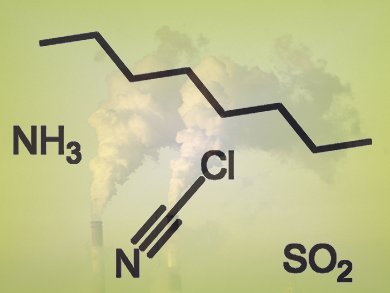Researchers at Northwestern University, Evanston, Illinois, USA, and their colleagues have modified porous organic polymers (POPs) with metal-catecholates as an alternative route to useful materials that side-steps the design and synthesis of metal-organic frameworks (MOFs). Various porous materials including POPs and MOFs have been investigated as gas storage media, but the team has now demonstrated that POPs could be used in chemical protection systems because they have such high capacity for gaseous adsorbates.
The advantage of POPs over MOFs, the team has shown, is that even under humid conditions, the POPs with their toxic load remain stable whereas many experimental MOFs would degrade and release the adsorbed gas. The team constructed POPs with built-in organometallic groups that can hydrogen bond to adsorbed gases forming a stable repository for hazardous, airborne agents such as ammonia, cyanogen chloride, sulfur dioxide, and octane.
- Removal of airborne toxic chemicals by porous organic polymers containing metal-catecholates,
Mitchell H. Weston , Gregory W. Peterson , Matthew A. Browe , Paulette M. Jones , Omar K. Farha , J. T. Hupp, SonBinh Nguyen,
Chem. Commun. 2013.
DOI: 10.1039/C3CC40475G




